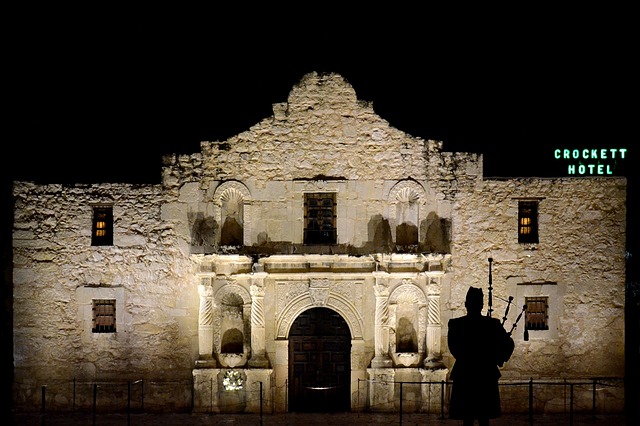When we think of the Alamo, we think of the brave men who defended it against the Mexican army. But it was not always a military defense. It began as a religious mission, built by the Franciscans in the early 1710s. Mexico was, at one point, controlled by Spain. By the end of the century, the mission was not in use anymore, falling into ruin. It was an occasional stopping point for Spanish soldiers, but for the most part, it remained abandoned until the war for Texas began. Mexico won its independence from Spain in 1821, but they were about to encounter another war for independence, this time in Texas.
In the 1800s, settlers were flooding into Mexico-controlled Texas. In 1835, as the war for independence in Texas began to ramp up, a group of defenders took refuge in the old mission in San Antonio. Sam Houston, the commanding general, determined that the old mission was not a defensible position and recommended that it be abandoned for a better location. The men inside the Alamo refused, holding their ground against the massive body of troops on their way from Mexico.
While the defenders held off the Mexican army, Sam Houston was busy raising support throughout Texas. Detachments were raised, but it was a race against time to see if anyone would be able to get to the old mission in time to help those who were defending it. Col. William B. Travis was in charge of the old mission, and with around 180-220 men inside, they were vastly outnumbered by the large army approaching under the command of General Santa Anna.
Those defending the Alamo, including David Crockett and James Bowie, managed to hold off the Mexican army for 13 days. On 6 March 1836, the Mexican army breached the mission and killed everyone inside, minus a small number of women and children. Instead of burying the defenders, the Mexican army burned their bodies and their ashes buried in a grove of trees, of which the location today has been lost.
Around 350 troops under the command of Col. James Fannin attempted to reach the defenders at the Alamo but were unsuccessful. After their surrender to the Mexican troops, Col. Fannin and his men were executed by the Mexican army on 27 March 1836.
The fall of the Alamo and the subsequent massacre of Col Fannin’s regiment sent shock waves throughout Texas. Afterward, at the Battle of San Jacinto, the cry “Remember the Alamo” was heard as the Texans went on to defeat Santa Anna’s army. The phrase was also used during the later Mexican-American war.
Today, the Alamo is open to visitors, sharing the story of the beginning of the war for independence in Texas.
Books on the Alamo:
- A Time To Stand – Walter Lord
- The Gates of the Alamo – Stephen Harrigan
- The Blood of Heroes: The 13-Day Struggle for the Alamo – James Donovan
- David Crockett: The Lion of the West – Michael Wallis
- A Line in the Sand: The Alamo in Blood and Memory – Randy W. Roberts
- 13 Days To Glory – Lin Tinkle
- Texan Iliad: A Military History of the Texas Revolution, 1835-1836 – Stephen L. Hardin
Movies on the Alamo:
- The Martyrs of the Alamo (1915) note: this is a silent movie
- Davy Crockett: King of the Wild Frontier (1955)
- The Last Command (1955)
- The Alamo (1960) with John Wayne
- The Alamo: Thirteen Days to Glory (1987)













